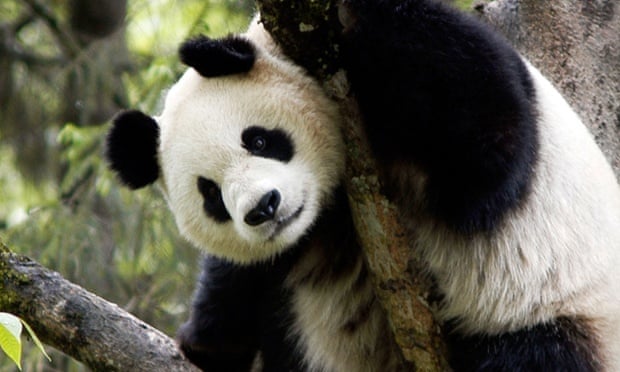
It’s official. There are now 1864 adult pandas in the wild, according to an announcement made by China’s State Forestry Administration at a long-awaited press conference in Beijing this morning.
For the past 40 years, China has conducted a survey of adult pandas in the wild, at roughly ten-year intervals. The 1970s estimate was 1100. In the 1980s, it was 1120. The third census, conducted between 1998 and 2002, gave us 1596 pandas. The latest figure of 1864, revealed this morning, suggests that the number of adult pandas in the wild has increased by 268 over the last decade, a gain of 16.8%.
The total area inhabited by wild giant pandas is estimated at 2,577,000 hectares, an expansion of 11.8% since the last report. With the number of dedicated panda nature reserves increasing from 40 to 67 over the same period, it’s reckoned that 1246 pandas or two-thirds of the entire population now resides in a protected area.
“The increase of both the wild giant panda population size and habitat area over last ten years is a significant conservation achievement,” says Xiaohai Li, executive director of programmes at WWF-China in a press release.
For all those who want a conservation success story, stop reading now. But if you can tolerate a bit grey in the place of black-and-white, you might want to digest just one more paragraph.
As I pointed out in an earlier post, China has changed the method of monitoring pandas over the years, making it difficult to know whether panda numbers really have risen. I also noted that if it were up to politicians to put a figure on the wild panda population, they’d be happiest with precisely the kind of modest increase we’ve seen today. It’s enough to claim that support for panda conservation is paying off, but it’s not so great as to take the panda away from the limelight that comes with being classified as “Endangered” (which would occur at a population size of 2500). In spite of these niggling caveats, I am prepared to state, with some certainty, that the number of pandas in the wild - whatever that figure really is - is either going up, going down or staying the same.
If pandas and politics are your bag, you might be interested in my second book The Way of the Panda: The Curious History of China’s Political Animal (Profile Books, 2010).
CORRECTION: Over at Nature, Jane Qiu has written an excellent piece on the survey results in which she points out that IUCN can downgrade the status of a threatened species from “Endangered” to “Vulnerable” if a population of less than the 2500 is on the increase. This, it would seem, is the case for pandas.